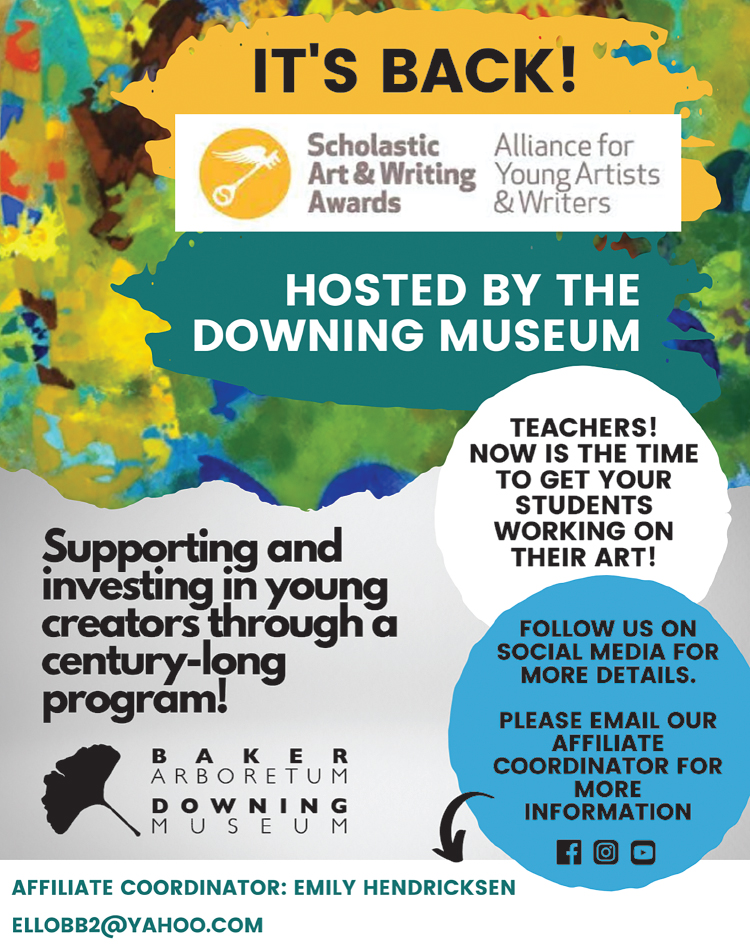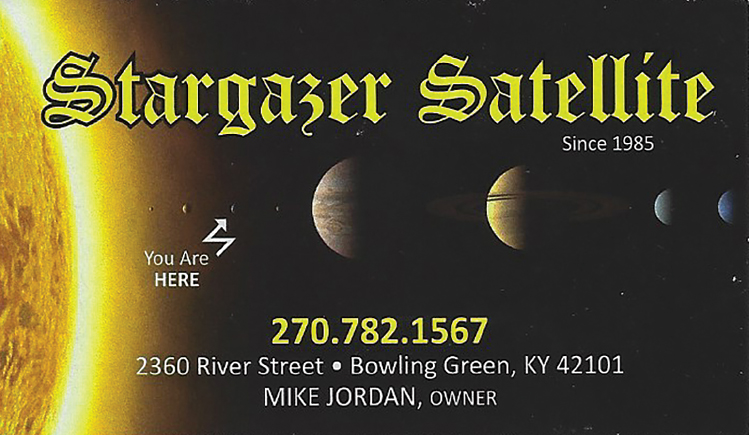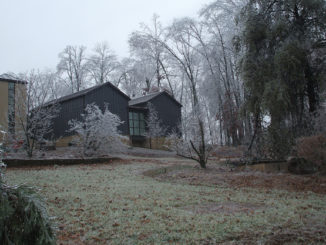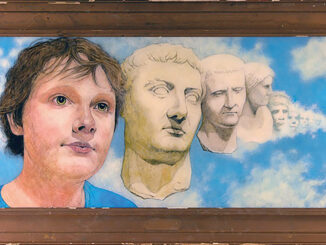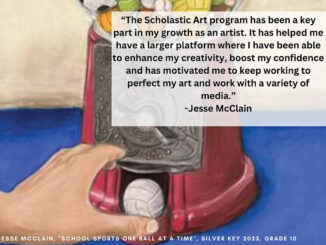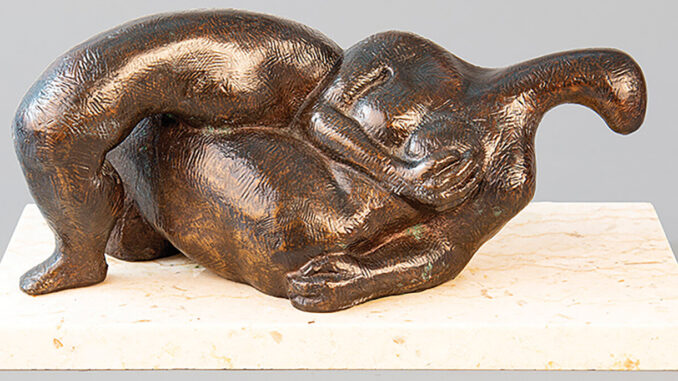
The Downing Museum is proud to announce a retrospective exhibition of the sculpture and drawings of Charles Forrester (1928-2010), September 13-November 14, 2021.
In addition, a screening of the award-winning documentary film, A Line Unbroken: The Charles Forrester Story will be held at the Capitol on September 16 at 6PM. A discussion will be held afterwards with the artist’s daughter, Winifred Forrester; WKU Art Historian, Dr. Guy Jordan; and former student and sculptor, Russ Faxon. The documentary has a fully-illustrated companion book, A Mind in Motion: The Art of Charles H. Forrester, published in 2020.
Charles Forrester was born in 1928 in Jersey City, NJ. Forrester’s family faced extreme hardship when his father served three years in prison for bank fraud and again in 1932, when his mother developed schizophrenia, spending her remaining years in a mental institution. Forrester’s older sister became his caretaker and maternal figure.
World War II raged through Forrester’s teenage years. In New York City, where he lived, Jewish refugees flooded the same ports where soldiers shipped out and dead bodies were returned home from the war. The scarcity of jobs forced millions to lose their homes and many people were starving. This tumultuous backdrop imprinted itself on Forrester during his youth and provided context to his later life and artwork.
After being discharged from the Air Force in 1949 and earning his high school diploma, Forrester attended City College in New York. Unfocused, he was adrift and uncertain about his future. He knew he was talented in art and passionate about drawing, but lacked confidence to explore it as a profession.
In 1951, he met Dorothy Reese. Originally from Seattle, Reese had graduated from Barnard College in New York with a degree in political science and had recently returned from Europe after graduate study at the University of Zurich and the University of London. They married within weeks and their loving partnership lasted fifty-three years. She became Forrester’s muse and provided the support and encouragement he needed to explore his creativity. Shortly after their marriage, they moved to Seattle, where Forrester earned a Bachelor of Fine Arts in 1958. He studied sculpture under Everett DuPen (1912-2005), whose work had a lasting influence.
In 1958, the family moved to Eugene, Oregon, where Forrester earned a Master of Fine Arts degree. He studied under the internationally known artist Jan Zach at the University of Oregon with fellow sculptors Arthur Jorgenson, Walter Hannula, and Phillip Levine. Other early influences were the Russian sculptor, Naum Gabo, and Buckminster Fuller.
In 1959, Springfield Junior Chamber of Commerce commissioned him for a monument honoring Oregon’s one-hundredth year of statehood. The Equestrian became one of his most famous outdoor works. Sixty years later, the twenty-five-foot-tall horse and rider sculpture still stands at the west entrance to Springfield, Oregon. Into the early 1960s, Forrester had established himself and worked on numerous commissions including character busts for Oregon’s Shakespearean Festival and several outdoor sculptures for two different public parks.
In 1963, they moved to Manchester, England, where Charles served as a sculpture instructor at Salford Technical College. It was here that he worked with British sculptor, Mike Yeomans, in structural studies, which inspired many of his wire and metal tube suspended sculptures.
Two years later, the family moved to Southern Kentucky, and Forrester became the first professor of sculpture at Western Kentucky University. When the Ivan Wilson Fine Arts Center was built in 1973, Forrester designed the sculpture facility with state-of-the-art metal casting foundries, still used today. Forrester taught hundreds of students during his career and was known for his tidy, well-designed studio where every tool had its place. His daily attire comprised all-black turtlenecks and pants, seemingly immune to the white plaster dust floating everywhere. He taught at WKU for the next twenty-seven years while also exhibiting his artwork in many galleries and institutions.
Forrester was known for working in many different mediums, as well as his curiosity and love of experimentation. He sometimes used Gestalt drawings for designing his sculptures, as well as modified Ouija boards for creative inspiration, reflecting on his intellectual curiosity of metaphysics. While his large concrete outdoor sculptures are among his most well-known works, he also created smaller sculptures cast in bronze or aluminum. Charles was especially adept at working with the human figure, and created both portrait busts as well as much larger figurative forms in materials ranging from welded steel to laminated plywood.
His works are highly stylized and often abstracted, although quite capable of capturing startlingly realistic details – sometimes twisted into sly visual puzzles and riddles. His kinetic sphere sculptures and wire suspension works inspired him to take a keen interest in engineering and merge interdisciplinary processes into his already diverse creative practice.
Charles created over 550 sculptures during his lifetime, with the majority found in private collections. In 1992, Charles retired from teaching. Five years later, he and Dorothy moved to Nashville, Tennessee, where he maintained a studio until he died in 2010 at eighty-one.
His sculptures have been shown in regional and national exhibits, receiving numerous awards. During his lifetime, he was commissioned to create artwork for the Springfield and Medford, Oregon public parks and the Shakespeare Memorial Theater in Oregon, the Bundy Art Museumin Vermont, Broughton School in England, Bowling Green-Warren County, KY Hospital, Northern Telecom in Nashville, Gray Construction, Lilly Corporation, J.P. Matthews & Co. and numerous private patrons.
-by Jack LeSieur

